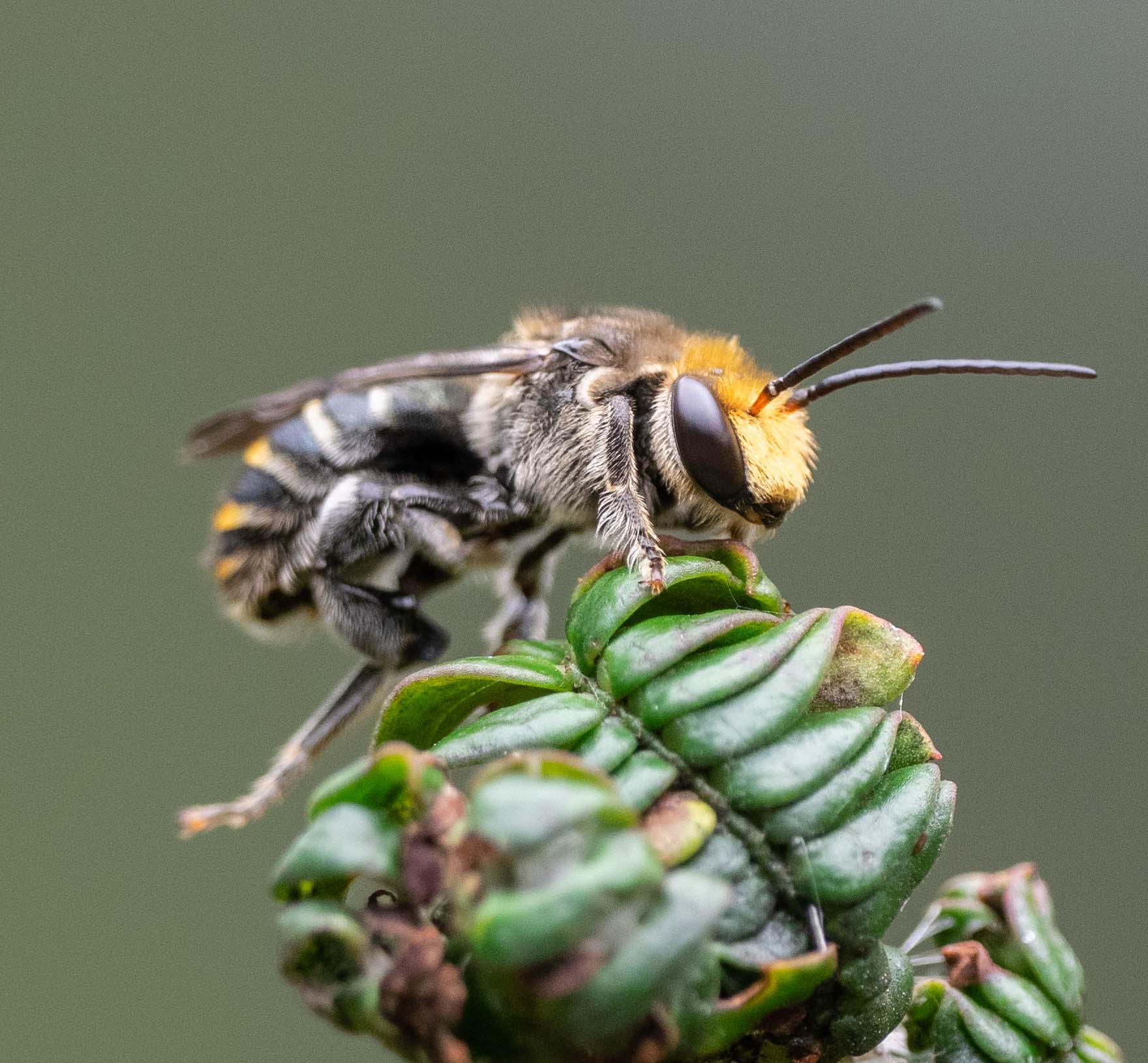Lipotriches (Nomia bees)

Workbook
Clusters of males like this are a common sight, particularly during Summer.
Cluster on low bushes near house, 28th Dec 2018
I thought it was time to take a closer look at one and so - hopefully - confirm the species ID.
Step 1: which family?
Stenotritidae? Males do often cluster, and the colour bands are similar to Lipotriches … ?
check antennae. Does it have the long first segment of flagellum is typical of the family?
NO
p169, Houston. T, 2018
check forewing venation (cf page 169, Houston)
NO, not a match. It does have 3 submarginal cells, typical of Stentritidae, but the overall venation is very different …. and it IS a good match for the Lipotriches venation shown in Houston (page 10, Fig 7)
Halictidae then. This is the family to which Lipotriches belongs
check forewing venation … basal vein should be strongly curved; 3 submarginal cells (although 3rd may be poorly defined)
the shape of submarginal cells is a key to subfamiies (page 176)
The tongue confirms that this is indeed Halictidae. The glossa is dagger-like, on an extendable arm.
p176, Houston. T, 2018
1a in the above key, based on the submarginal cells
NOMINAE
Genus Lipotriches
The hind edge of each abdominal tergite has a fringe of closely adpressed hairs. (Nomia, in contrast, usually has several bright, hairless, enamel-like bands.) The other two genera are only found in far northern Australia.
subgenus Lipotriches (Astronomia)
The hindlegs of the male are strangely swollen. (Lipotriches s.st , in contrast, have regular shaped hindlegs)
There are 54 species in this sub-genus!
Comparing to original description of Nomia australica (Smith, 1875)
Features common to male & females
thorax head black, abdomen steel blue
the scape of the antennae and the underside of the flagellum reddish (but I can’t see the base of the clypeus, due to dense red hairs)
the hairs of the frons and vertex tawny gold (“fulvous”), while the hairs of the cheeks are grey (“cinereous”)
Thorax: finely punctate throughout
Hairs of thoracic pleurites and sternites grey
Hairs of legs: grey on femur and tibia, reddish on tarsi
Posterior scutellum with dense, short, white hairs
wings not quite transparent, and pigmented at the apical margins
tegulae red-brown in colour
Abdominal segments: 3rd, 4th and 5th with band of golden hairs; only a slight scattering on segment 2
Antennae as long as head and thorax
Features of males
antennae long … as long as head and thorax combined
Apex of clypeus and the mandibles are dull red (“testaceous”)
Abdomen narrowed at base
Hind femora swollen
Tibia greatly expanded at apex, with extended, square-ended processes beneath
Smith (1875) described this as Australia’s most abundant species in the genus. He also noted that the colour of the abdominal bands varies with age and with location.
This is a workbook page … a part of our website where we record the observations and references used in making species identifications. The notes will not necessarily be complete. They are a record for our own use, but we are happy to share this information with others.





